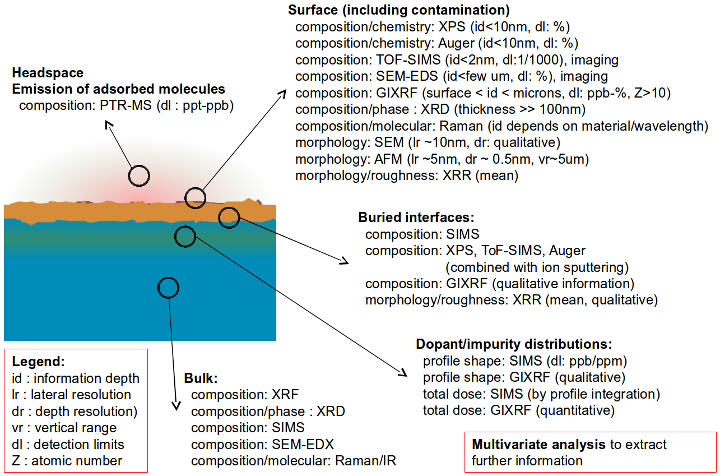Materials Analysis
The MNF unit offers a wide range of materials analysis related services.
For information about the materials analysis services please contact Roberto Canteri.
Materials Characterization techniques can be grouped according to different criteria and depend on the information to be obtained.
Here below an image trying to guide you through the available techniques.

Another possible way of listing the techniques according to the physical properties is shown below.
| Mass spectrometry |
Secondary Ion:
|
| Proton Transfer, PTRMS | |
| Optical spectroscopies |
Raman |
| Photoluminescence (PL) | |
| UV-VIS-NIR absorbance/reflectance | |
| Fourier Transform IR (FTIR) | |
| Core level spectroscopies |
X-Ray Photoelectron Spectroscopy (XPS) |
| Auger Elecron Spectroscopy (AES) | |
X-Ray Emission spectroscopy:
|
|
| Scattering | X-Ray diffraction (XRD) |
| X-Ray reflectivity (XRR) | |
| Electron Backscatter diffraction (EBSD) | |
| Scanning microscopies |
Scanning Electron Microscopy (SEM) |
Scanning Probe Microscopies (SPM):
|
|
| Confocal micro-Raman | |
| Confocal micro-Photoluminescence | |
| Micro–X-ray Fluorescence analysis (Micro XRF) | |
| Mechanical tribological properties |
Scratch test:
|
Tribometry:
|
Details about the instrumentation used for the various techniques can be found in the Infrastructure pages.